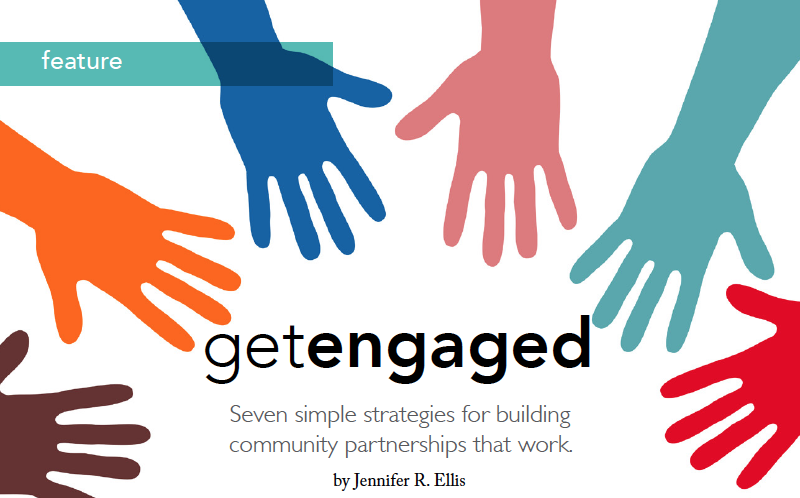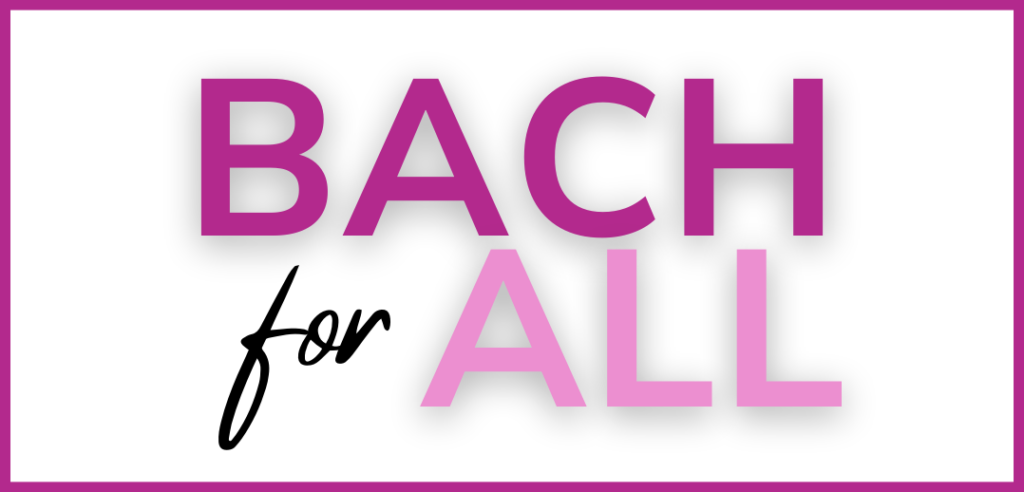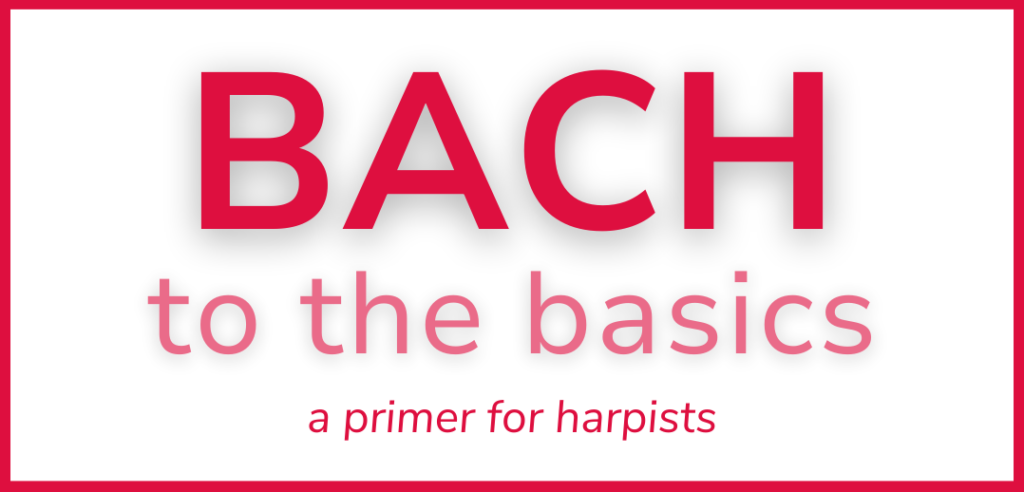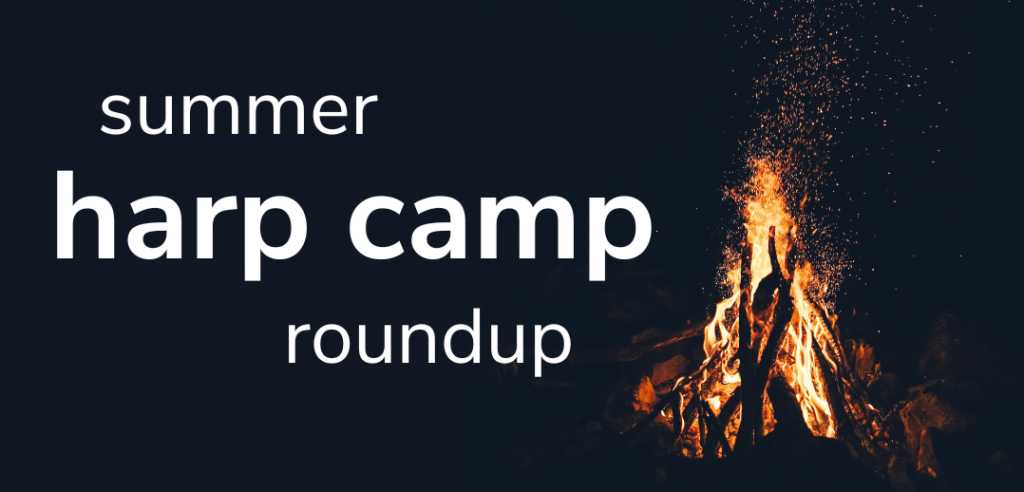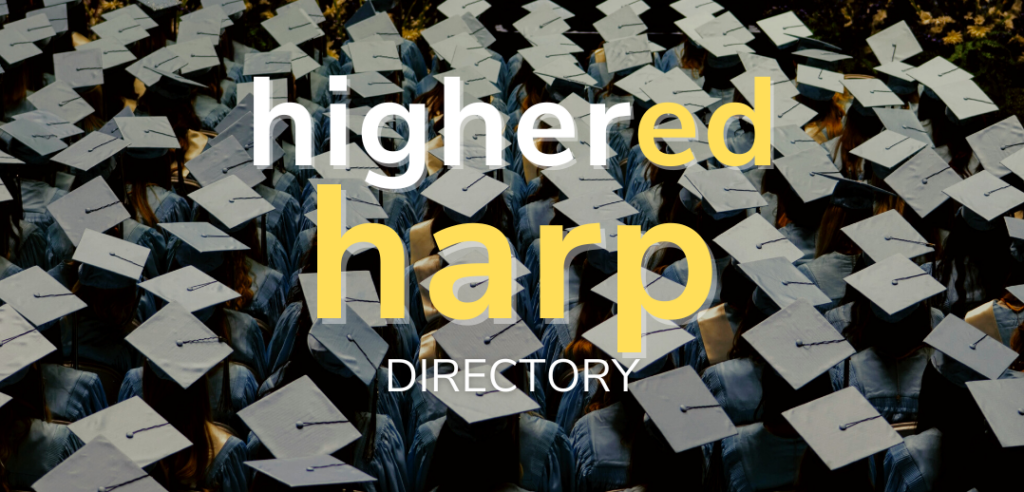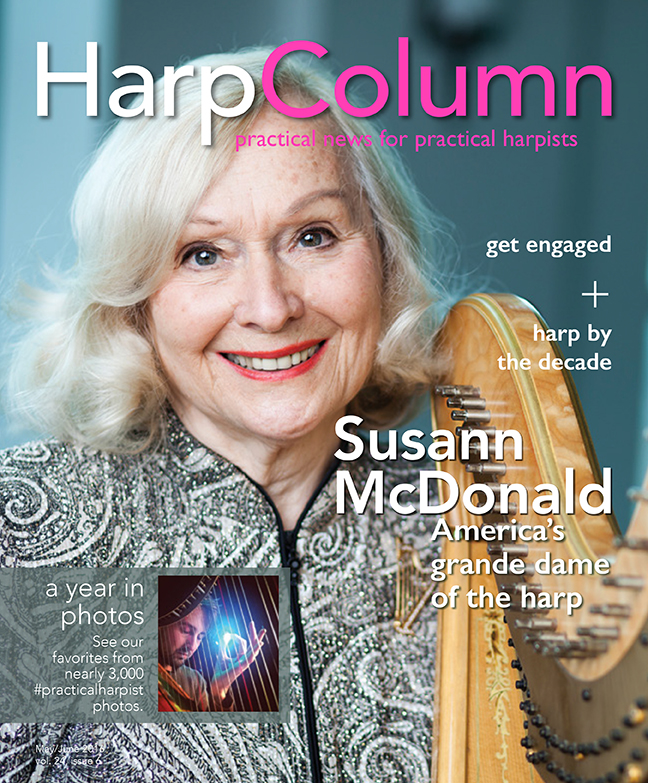—by Jennifer R. Ellis
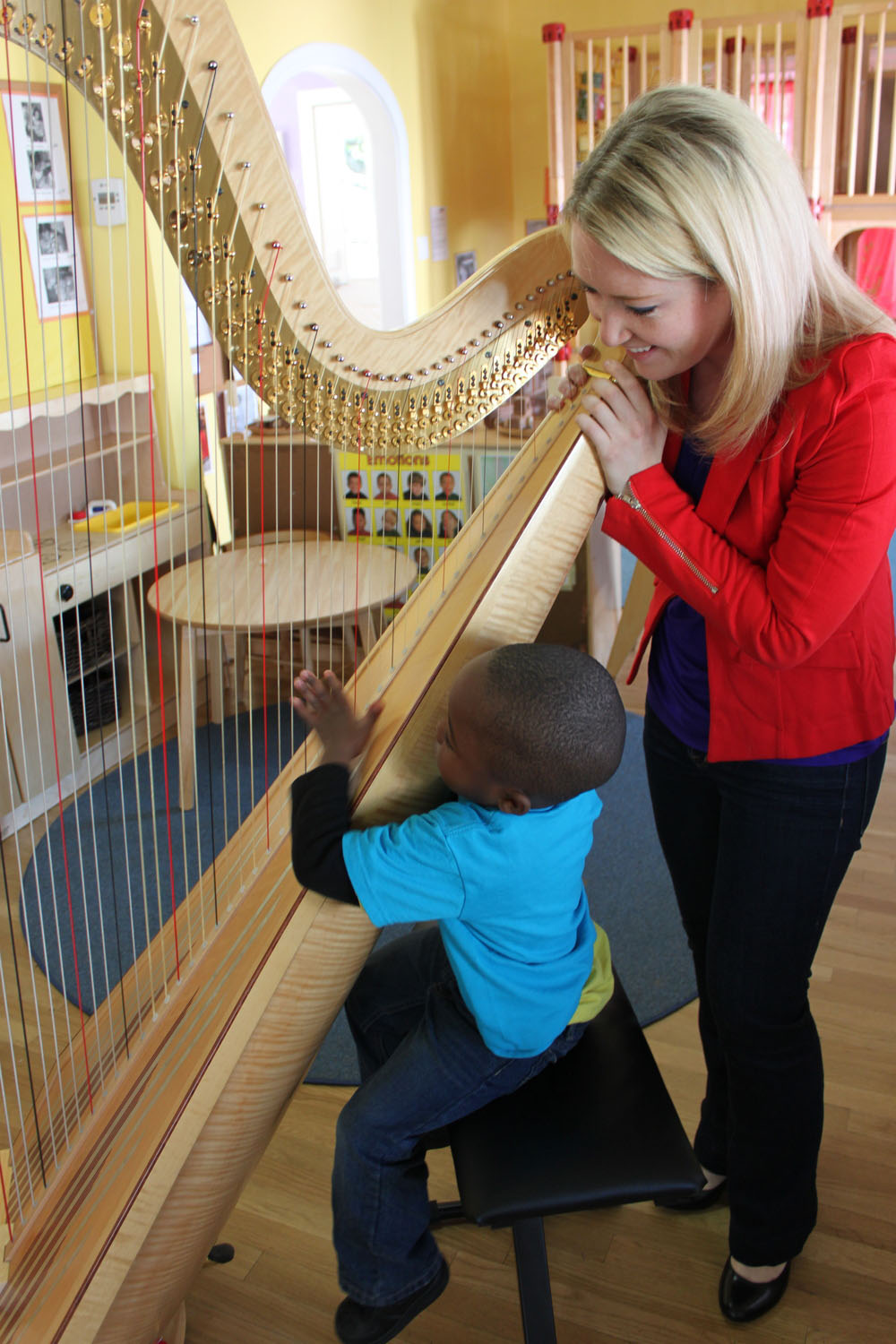
Several years ago, I showed up to play at a nursing home only to discover that they had advertised me as a “cellist.” To this day, I am mystified. I feature the word harp in both my email address and website title. “Harpist” is the first word of my bio. Come to think of it, I have never so much as touched a cello.
I wheeled my harp into a room of sorely disappointed people—including a former professional cellist who had eagerly anticipated the afternoon’s cello performance. I explained to the crowd that while not a cellist, I was nonetheless honored to be there and excited to play. Some people bought it, but a clear contingent remained unconvinced. The harp served as a poor substitute for their cello expectations.
It would be easy to get indignant. Here I was, doing this concert because I wanted to give back to my community. And now, despite my best efforts, my audience was disappointed because I didn’t play cello.
These sorts of surprises are the tip of the iceberg with music outreach and community engagement projects. Most musicians approach community engagement with the absolute best of intentions. You are eager to give back to the local community and excited to make a difference. Then, you bump up against reality. Baffling miscommunications occur—like my supposed cello debut. Harpists used to hearing back about gigs in under 24 hours can be discouraged by a nonprofit’s five-week response time. What? I’m offering to help get a grant to provide music to kids in this low-income, after-school program. It will be totally free for them! And they don’t even respond? Harpists who work tirelessly to launch a free concert series at a local community center can easily burn out when, after months of work, only two people show up in the audience. Sometimes, it can just feel overwhelming. You want to launch a harp program in your local schools, but you may not even know where to start. And when you do finally gain some traction, you find so much red tape that you could use it to wrap pedal felts on a hundred harps with more left to spare.
There are some great tools that have already been developed for community engagement, buried in the depths of academia. But don’t worry; you don’t have to wade through a pile of dense research. We’ve curated the resources out there so you don’t have to. Whether you want to run a music program through a homeless shelter, or create a concert series to air on your local access television station, or begin a harp program in the public schools, you will need the enthusiastic support of community partners. Community partners are the people and organizations that your project will affect, whether that effect is big or small. Here are the seven top strategies for cultivating that support:
1. Focus on Community Needs
Rather than coming to the table with the mindset that this organization should be grateful for your help, be cognizant of the burdens you might create for them and proactively minimize them
The first step in any community engagement project is to assess community needs. It’s so easy to get caught up in a shiny new idea’s allure—especially when you are personally invested in the cause—and launch straight into bringing the idea to life. That approach, however earnest, misses a critical first step. Rather than simply plowing ahead on your assumptions about what the local community needs most, you need to first do your homework. Any community engagement project must begin by opening up conversations with the community you want to work with about its actual needs.
Laura Amtower is an innovative and award-winning community artist who has done projects such as helping elementary students design their own playground. She emphasizes the importance of starting with community needs. Laura learned this lesson during one of her first community engagement projects where she set up a summer arts program for kids in an underserved neighborhood. She recalls, “I had all of these awesome, glamorous ideas about how we were going to make permanent installations in the park, and even the mayor was on board… I had a different plan for every week. One week was on music, one week was on theatre, one week was on a mural…I worked and worked and worked, and it just never happened. Not because we failed, but because it didn’t need to happen, and they didn’t need those things. I thought they needed those things… What they needed was something to do in the afternoons over the summer that was productive. They didn’t need the outcome [that I had planned]. And, I think it was hard for me to accept that that was okay, but I had to. It’s not about me.”
The wonderful thing about Amtower’s story is that she learned to move from her project vision to a vision centered on the needs of the community. However, her experience is a common one. Take, for example, a group of enthusiastic and well-meaning college music students who decide to offer free lessons in a low-income neighborhood or nearby city. They want to make sure everyone has access to music regardless of income, and they figure that they’ll benefit by getting some basic teaching experience. Win-win, right?
Maybe not. Of course, the desire to provide music education to all is a fabulous one. But, have these students thought through all the ramifications of their idea? If they leave their college campus and successfully implement a thriving teaching program as a hobby, what does that do to the low-income musicians already living in that neighborhood? What happens to the local music teachers depending on lessons for their livelihood? Are the university students helping that neighborhood? Or, does their project decimate the fragile arts economy within that neighborhood? With a little more research, they might have found that teachers were plentiful locally and that they already offer low-cost or affordable lessons. They might discover that the biggest barrier to music access in that neighborhood is actually instrument access. The students could instead target their considerable creative energy and resources towards addressing the need for instruments instead of the need for lessons. Or, if cost of lessons does turn out to be the barrier, the university students can found and fund a scholarship organization for kids that will pay the local teachers for lessons.
So, how do harpists go about identifying whether their project idea is in line with community needs? Ideally, community needs emerge through series of conversations with a variety of community members. Take people out to coffee. Research potential community partners on the Internet. Read up on the news and issues of the community you want to work with. Set a community news site as your browser’s homepage. Oboist Crystal Hall, former teaching artist in the Chicago Public Schools and faculty at MacPhail Center for Music in Minneapolis, says, “Start by identifying your allies. Capitalize on your connections.” She explains, “The established relationship with an organization or with someone in an organization is your currency as an artist looking to do community engagement.” That’s how you start to build a network of collaborators and allies to get your community engagement project off the ground.
However, community organizations with excellent potential for collaboration, from schools to homeless shelters, are often overworked and understaffed. Accordingly, the last thing you should do is add to their burden. Hall notes that a frequent problem is musicians who approach community partners with the attitude, “Here, I’m giving you my talents” without recognition of the work they create for the organization. So, as you gather information about community needs, it’s important to approach community members with the mindset of minimizing their burden. That means offering to pay for coffee, picking a conveniently located meeting place, conscientiously respecting their time, offering to meet in multiple modalities (in person, phone, Skype, etc.), and researching the community partner ahead of time so that you come in prepared.
Rather than coming to the table with the mindset that this organization should be grateful for your help, be cognizant of the burdens you might create for your community partners and proactively minimize them.
2. Incorporate Reciprocity
Reciprocity means acknowledging benefits on both sides of the equation—a win-win situation. In the previous strategy, we discussed harpists not assuming an aren’t-they-lucky-I’m-giving-my-talents attitude. Part of that is recognizing that while you may be taking on a great deal of work to bring the project to fruition, you are also benefitting from the project. Reciprocity disrupts the clichéd dynamic that one person is the generous giver, while the other is merely the lucky recipient. Reciprocity recognizes the skills, expertise and basic human dignity on both sides of the equation.
A classic example of reciprocity from outside of music is a Spanish-language tutoring program, written up by researchers Lucía d’Arlach, Bernadette Sánchez, and Rachel Feuer. They describe a program where language students meet with native Spanish speakers. For half the tutoring session, the students tutor the native Spanish speakers in English literacy. Then, the roles flip-flop and the native Spanish speakers tutor the students in Spanish literacy. Both groups get to give and receive and both groups are seen as experts in their own area.
In a musical context, reciprocity could mean having your private harp studio students do monthly concerts at a local nursing home. But instead of just sweeping in, playing the repertoire the students are working on, and sweeping out again, students could interview residents about their favorite songs and musical tastes. Students could be learning about a whole generation of music they might not be familiar with. They could even learn arranging skills by learning to transcribe residents’ requests for the harp.
Of course, reciprocity is not about placing burdens on people who already have too much on their plate. Reciprocity certainly does not mean that a harpist playing for dementia patients must demand they give equal amounts to what they receive in time and effort. Instead, reciprocity is a more flexible concept about coming from a place of being gracious and humble. Reciprocity means that you walk into a community engagement project assuming that you have as much to learn you have to give.
3. Clearly Define the Scope
One strategy that builds trust between a musician and their community partners is to be upfront about the scope of the project. What do you envision? Is this a one-time concert or a long-term partnership? What commitment exactly are you offering?
Establish clear expectations from the get-go. When you book a wedding, your lay out strong standards in the contract. When you approach a community partner, expectations are rarely as defined. Clearly communicating your plan—including what you need from your community partner—is vital in order to avoid misunderstandings. If you’re developing a program for your local schools, for instance, you need to be clear with teachers about exactly what you need from them. Halls says, “The worst thing you can do is tell a teacher that something’s not going to be any work… ‘Oh this isn’t going to be any work for you—trust me!’ Time is very precious to teachers—to everybody.” Do you want to request two in-person meetings for 30 minutes over the semester and then about 10-20 minutes of weekly email communication? Do you need to make use of their classroom materials, or can you bring your own? Are you taking care of getting grants and funding, or did you want to connect with a parent volunteer to help with that? Lay out what you realistically need.
It’s not that you have to unilaterally make these decisions. It can be something that develops collaboratively with your community partners. Yet, it is a conversation that needs to happen relatively early in the process in order to ensure that everyone is on the same page.
4. Map Out the Stakeholders
Your community engagement project probably affects many more people than you would think at first glance. You want all these people on your side, so when approaching your project, it’s helpful to consider as broad a range of community stakeholders as possible. Community stakeholders are any person or group that will be affected directly or indirectly by your program. These are your potential allies, your possible donors, your partners-in-crime. If you don’t take the time to consider their views early in the project, you may well accidentally leave people out of those early conversations on community needs—a swift way to turn allies into opposition.
Try out this exercise based on the work of scholars Bringle, Clayton, and Price: write out all the community stakeholders in a circle. Then, draw connections between every single stakeholder on your map and consider the relationship between each. For example, if you were starting an after-school harp program, you wouldn’t just consider your project’s relationship to the music teacher, parents, students, school administration, school district, PTA, local music teachers, funders, other local music nonprofits, etc.
You would also consider each of their relationships to each other. It’s natural to realize that you have no idea how parents are getting along with school district officials or what the PTA’s opinion is of your funders. Mapping out the stakeholders illuminates what areas need more research and more information. You don’t want to find a group of parents boycotting your community engagement project because they don’t support the funder you’re using. Those groups should be your allies. But if you don’t take the time to map out their relationships and anticipate their concerns, you could easily turn allies into enemies. Mapping out the stakeholders ensures that you are doing your homework, recognizing potential allies, and figuring out how to address their concerns.
5. Translation
In my life as a freelancer, I’ve encountered a few occasions of clients swearing that there were “no stairs” at the venue, only to arrive to find Hogwarts-like staircases everywhere I looked. They knew there were no stairs inside the venue, but forgot the two-dozen steps up to the front door of the venue.
The number of stairs rarely matters as much to a client as it does to a harpist, and that difference is reflected in their answers. After all, people are way more attuned to things that affect their daily life. When the contents of daily life differ between you and your community partner, there can be miscommunications. That’s why it takes thoughtful effort to “translate” between you and community partners.
For example, sometimes musicians frame their outreach concert or community engagement work as “community service.” Some people view community service as a term with strong religious connotations, which may not be what the harpist has in mind. Or, as scholar Jeff Brooks reminds us, this term can also be very alienating in communities that have frequent encounters with law enforcement because it connotes punishment. Similarly, some community partners are reluctant to participate in programs framed as “outreach.” Who exactly are we reaching out too? The word sets up a hierarchal relationship not conducive to reciprocity. Even if you don’t mean it that way, those connotations—that you may not be aware of—will be automatically alienating.
Ultimately, no matter how carefully you try to navigate translating between you and your community partner, there will still be mistakes. What is important is that you commit yourself to learning from them when they do happen and do everything you can to educate yourself so you limit the amount of mistakes that happen. It doesn’t really matter how well-intentioned you were. To the community partner, what matters is the impact.
People recognize impact over intent when they accidentally step on someone’s toes. They didn’t mean to but they still apologize. And yet, when the mistakes that happen involve more sensitive cultural issues that can differ between the harpist and their community partners—whether class, race, ethnicity, educational status, age, ability, or others—the first instinct is to often get defensive and explain that you didn’t mean it that way. That defensiveness damages the trust between you and your community partner. Instead, recognize that your words had an impact you didn’t expect and apologize.
By all means, do your homework. If you’re playing at a homeless shelter, learn all you can about homeless shelters. If you’re playing in a community that is a different ethnicity than your own, make it part of your job to learn more. Yet, maintain no illusions that doing that homework makes you flawless. Be prepared that you still may make mistakes no matter how much you try to learn in advance. Don’t let pride get in the way of an apology.
6. Continuing Communication
So let’s say you’ve researched community needs, you made your chart of stakeholders, and you successfully launch your project. Now what? How do you know if the project is working? How do you keep lines of communication open?
In order for a community engagement project to thrive, it is crucial to keep communicating with community stakeholders throughout the process. The trick is to do this in a way that will solicit honest feedback without creating an unnecessary demand on their time. In a project with elementary school students, Amtower gave them a little quick response to fill out every single class session. It was very short, and the questions varied each session. However, it got students in the routine of giving a little bit of feedback at the end of every session. As this routine went on, their responses became more candid.
Some musicians may meet with their community partners on some sort of set schedule, like meeting for coffee once a month. Some make quick surveys using simple checklists that take under a minute to fill out. Ask questions that allow you to compare the community partners viewpoints with your own to help reveal areas of lurking miscommunication before they come to a boil. In meetings with a variety of community stakeholders at the table, you can collect anonymous index cards that state what they think is going best about the project and what they are most concerned about with the project.
7. Be Resilient
Just like everything else you do as a harpist, a successful community engagement project takes resilience When learning Renie’s Légende, any harpist will make a whole host of mistakes and put in substantial work before the piece begins to run smoothly. Why should this be any less true in community engagement work? Don’t get discouraged. A project is a lot of work and creative effort, but can yield remarkable results.
Often early in the project, you may not see the sort of response you were hoping to get. It’s important to be consistent. Sometimes the program has to prove that it’s committed to the neighborhood before people will start attending. Besides, you can use that low attendance information to start figuring out if there are additional barriers to attending that you haven’t yet considered and utilize that information to improve the program.
Other times you may start a project with a really clear vision in mind, but as you work with community partners, it may take a very different shape. That’s okay too. It’s helpful to be open and flexible to change.
Community engagement is a craft that you have to practice thoughtfully, just like the harp. And just like your instrument, with thoughtful practice, you can create something that blossoms and thrives. •
From Academia to Real-World Application

Community engagement has interested me for as long as I’ve been a musician. As a teenager, I earned my Girl Scout Gold Award with two other scouts by creating a six-week music curriculum for the second grade at a local school where music had been cut. That project sparked my curiosity. I wanted to apply the same diligent approach to improving my playing as to improving my musical community engagement work. Where were the books, the tools, the resources for how musicians can launch, analyze, and improve their community engagement work?
So, in my undergrad studies, as I continued to play a wide variety of music outreach concerts, I designed and executed an independent study course on music outreach and interactive performance. I dug through resources in the library and balanced them with hands-on experience. When my school added an outreach course in my last year, I quickly registered. In my master’s program, I took additional courses in nonprofit management as I continued to play at facilities ranging from memory care units to psychiatric wards. During my D.M.A. studies, I kept playing at arts-based literacy programs for at-risk or homeless youth and nursing homes alike, but I also became one of the inaugural University of Michigan Engaged Pedagogy Initiative Fellows. The program was designed to teach best practices for community engagement and community-based learning across all fields. It gave me a treasure trove of resources for how other fields handle some of the same questions that come up for harpists.
What a gold mine! I had been trying to reinvent the wheel, and here was a room chock full of wheels. From music conservatories to grant-giving organizations, community engagement and music outreach are quite the buzzwords these days. Here was a whole field already established that helps filter through the issues that both individual musicians and conservatories struggle with. Researchers including Robert G. Bringle, Patti H. Clayton, Rachel Feuer, Andrew Furco, Mary F. Price, and Bernadette Sánchez, among others, addressed questions familiar to musicians: How do we teach outreach to our students? How do we build meaningful community partnerships? How do we stay connected to our local community? How do we promote access? Rather than re-inventing the wheel, I could apply the knowledge from engaged learning to music.
As I spoke with other harpists about some of what I found, I discovered that I was not the only one hungry for more information on community engagement. I gathered my favorite tools and pared down the information to these seven steps to building solid community partnerships to help make your community engagement project a success.






